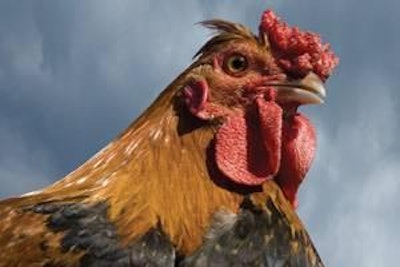
French poultry meat production fell by 4.1% to 1.1 million metric tons in the first eight months of 2009, compared to the same period last year. Following a short-lived recovery in 2007 and stabilisation in 2008, the number of birds slaughtered fell by 1.9% to 605.4 million head.
All species were affected, especially duck and turkey, however, with only a slight 1.6% decline in volume, broilers fared better, reports the French Ministry of Agriculture. Total chicken and guinea-fowl placements were down by 1% and 2%, respectively over the first eight months, turkey fell by 4%, while duck placements experienced the steepest decline, down by 9% from the beginning of the year.
Foreign trade
The downward trend observed over the last decade, representing a loss in production of 480,000 metric tons (- 20%) since 1998, is due to falling competitiveness, resulting in declining poultry meat exports, both within and outside the EU, as well as steadily rising imports. The latter were up by 8% to 177,474 metric tons in the first half of 2009.
Imports from EU countries, which made up 95% of the total, rose by 7%. Purchases from the Netherlands increased significantly, as did those from Belgium and Germany, albeit to a lesser extent. Imports from the rest of the world were up by 19%.
Volumes of frozen chicken and chicken cuts increased by 38% and 8%, respectively, making up 85% of France’s poultry meat imports. Turkey and duck cuts saw respective rises of 8% and 17%.
Purchases of processed goods from abroad were also on the increase (+ 7%), with non-EU imports rocketing by 42%. Imports from the EU, on the other hand, fell by 10%. Processed chicken accounted for 60% of imported processed goods, in line with 2008, while processed turkey rose by 20%. In value terms, total poultry meat imports recorded a 3% rise to Euro 379.8 million (US$572.3 million) in the first six months.
Meanwhile, plummeting Russian purchases caused poultry meat exports to drop by 2% to 252,319 metric tons over the period, despite a 3% increase in sales towards the EU. Exports to Belgium were up by 8%, while those to Germany, the UK and Spain fell by 11%, 10% and 8%, respectively. Non-EU exports were down by 8%, with a significant drop in sales to Russia (- 15,300 metric tons), compared with the first half of 2008. Exports towards the Middle East progressed, with 10,300 extra tons toYemen and 1,700 additional tons to Saudi Arabia.
Unprocessed frozen chicken helped to maintain export volumes towards the Middle East and Africa, while chicken cuts slumped, particularly towards Russia. Chicken made up 70% of French poultry meat sales.
Exports of processed goods were up by 18%, with turkey-based products doubling from the same period last year. Processed chicken remained stable, despite depressed sales in Russia. Slowing national consumption failed to offset declining foreign sales. Exports by value reached Euro 446.4 million (- 9%), according to French customs. The trade surplus amounted to Euro 66.7 million in the first six months of the year, compared with Euro 123.9 million during the same period in 2008 and 135.4 million in 2007.
Domestic consumption
Annual poultry meat consumption, which stood at 1.57 million metric tons or 24.6 kg per capita in 2008, registered a 2% rise in the first nine months of 2009.
Poultry meat ranks third in France after pork and beef and has experienced strong growth over the last three decades. The share of poultry meat increased from 15% in the early 1970s to 23% in 1990 and 28% in 2008.
However, overall consumption is now tending to stagnate in what can be described as a mature market. Notwithstanding the poor performance of duck sales between January and September this year, chicken proved competitive, with broilers enjoying a 2.4% rise. Turkey sales, on the other hand, have fallen by 50% since the the beginning of the decade.
Hypermarkets and supermarkets accounted for 85% of sales. However, their share is now at a standstill, due to increasing pressure from discount stores. At the same time, and despite the economic crisis, markets and small retail outlets have regained some of the popularity they had lost to the detriment of large stores.
Long-term prospects
Faced with fierce competition from emerging countries such as Brazil and Thailand, but also from other EU states, the French poultry market could nonetheless benefit from the relatively low prices and good nutritional quality of poultry meat, the French poultry farming technical institute (ITAVI), believes.
The industry needs to rely on its strengths and make the most of the low environmental impact of poultry farming, as well as its safety and positive image in terms of health. Other criteria such as animal welfare, freshness and proximity to market should also weigh in the balance.
Substantial progress has been made by the French industry over recent years, and excellent health standards have been achieved. However, countries such as Germany, Spain and Poland have developed at a quicker pace and France’s competitiveness within Europe is now in jeopardy.
Greater emphasis on traceability and quality, combined with a single industry-wide structure and common strategy, should help the French market to meet the challenges ahead, ITAVI deputy manager Jean Champagne says

















